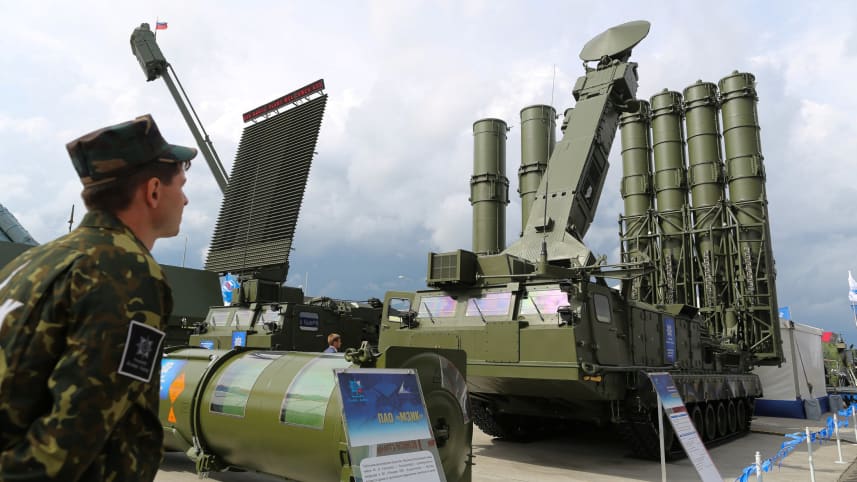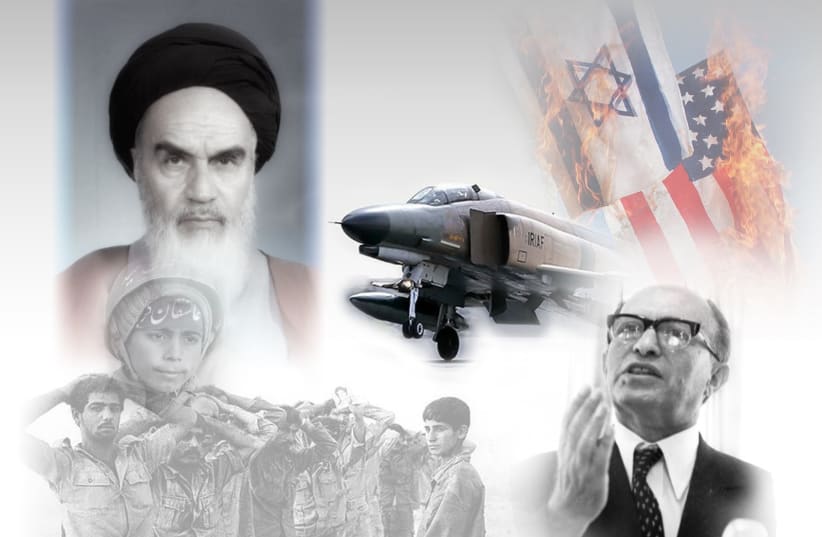Israel’s war planes unlikely to be deterred by Syrian missiles
محمد شبارو: من غير المحتمل أن تردع الصواريخ السورية غارات الطائرات الإسرائيلية
Mohamed Chebaro/Arab News/October 17, 2018
The Russian S-300 surface-to-air missile system that is set to be delivered to Syria — whether it will be operated by the Syrian military loyal to President Bashar Assad or by his Russian allies — is unlikely to alter much the free hand Israel has enjoyed in the skies above Syria and Lebanon, at least for the foreseeable future.
The delivery of the S-300 system, if it happens, will no doubt give the Syrian military an advanced weapon system that could check Israeli supremacy, but it will not be a game-changer that will push Tel Aviv to cease its targeting of Iranian and Hezbollah military assets that are deemed threats to Israel’s security.
In the seven years since the start of the popular rebellion against Assad and his family’s rule, Israel has not attempted to interfere or even encourage the removal of Assad. Israel has always believed that Assad’s rule in Syria should continue so that it can maintain the stability of its northern border. Some even believe that Israel has lobbied through its international diplomatic channels to veto the removal of the weakened Assad regime, and that all Tel Aviv is concerned with is that the regime remain weak and that Assad’s boisterous Iranian and Lebanese allies are banned from having high-tech missile technology on Syrian soil.
Since the Russian deployment in Syria in September 2015 to prop up the Assad regime’s forces, the Israeli air force has carried out numerous attacks targeting Hezbollah militia commanders, ammunition dumps, Iranian missile development infrastructure, Iranian drone launch sites, and Iranian and Hezbollah missile convoys in Syria and Lebanon.
In the past three years, military air traffic control in Syria has never been this busy, but it has been extremely well managed thanks to Russian liaison and coordination efforts between all parties. Israeli war planes had unhindered access to strike 200 targets in 2018 alone, while the international coalition against Daesh flew tens of thousands of sorties and struck hundreds of Daesh positions. The Russian, Iraqi and Syrian air forces have also carried out thousands of sorties, and Iran has launched dozens of drones and long-range missile attacks without any major incident.
But the controversial downing of a Russian military Ilyushin Il-20 plane with 15 personnel on board — most probably by a Syrian military shoulder-operated surface-to-air missile — in September somewhat spoiled the seamless Israeli-Russian understanding over Syria. Prime Minister Benjamin Netanyahu is waiting for his next meeting with President Vladimir Putin to clear the air, as Israel has again rejected Moscow’s attempt to hold it responsible for the deaths of the Russian servicemen. Israel has disputed the Russian findings and says its jets were back in Israeli airspace when the Russian plane was hit.
For Israel, it is evident that it wants to continue hitting Iranian and Hezbollah targets in neighboring Syria despite Moscow’s decision to equip Damascus with the S-300 system. The S-300 could only limit Tel Aviv’s free hand over Syria if Russia also supplies the latest radars, advanced counter measures systems and friendly and enemy plane identification software at the heart of the incident that saw the Ilyushin plane downed by the Syrian military.
The S-300 is, above all, a politically sensitive weapon system and a strategic balance of power breaker.
History has shown that, even at the height of the Arab-Israeli conflict in the 1960s and 70s, Moscow refrained from supplying its Arab allies with technology that threatened Israel’s strategic supremacy, and this sensitive Russian balancing act continues today.
The S-300 is one of a series of highly capable varieties of long-range surface-to-air missile first developed and deployed in the USSR in 1979, and later modified and upgraded by the Russian armed forces. As well as targeting aircraft, the fully mobile units also have the capacity to engage ballistic missiles. But the S-300 is, above all, a politically sensitive weapon system and a strategic balance of power breaker, hence the long Russian hesitation to supply it to Damascus and Tehran.
Yet the bottom line still depends on Putin. Though his minister of defense has been keen to protect Russian forces in Syria with electronic warfare systems, as well as equipping Assad’s forces with tracking and guidance systems to prevent future mishaps, I tend to believe that the status quo will not be affected. The Israeli-Russian hotlines established in 2015 will continue to be the medium to prevent accidents, while Israeli war planes will be allowed to monitor and act unhindered against what they consider to be enemy targets in Syria.
Putin’s Russia has mastered the act of balancing its interests with those of its allies, such as Turkey, Iran and Israel. Putin succeeded in pushing the Iranians back more than 100 kilometers from the occupied Golan Heights border area at the request of Tel Aviv. He also turned his back on his Iranian allies many times as Moscow failed to supply Tehran with the S-400 system — a more advanced version of the S-300. The Russian military stood idle as Israeli war planes neutralized Iranian weapon systems destined for Hezbollah, assassinated key Iranian and Hezbollah field commanders, and removed Iran’s advanced drone operation bases in Syria without the slightest reaction from Tehran or its allies.
In Syria’s many wars, the modus vivendi governing the relations of all the militaries involved is likely to continue. The only minor adjustments may be for Israel should Putin decide to cross the strategic threshold and arm Assad’s military with sensitive weapons that could make its operations more problematic, but not impossible, in the busy skies above Syria.
*Mohamed Chebaro is a British-Lebanese journalist with more than 25 years’ experience covering war, terrorism, defense, current affairs and diplomacy. He is also a media consultant and trainer.





















